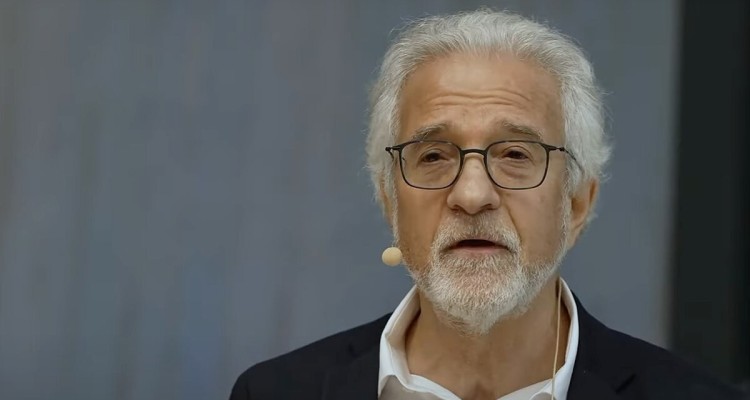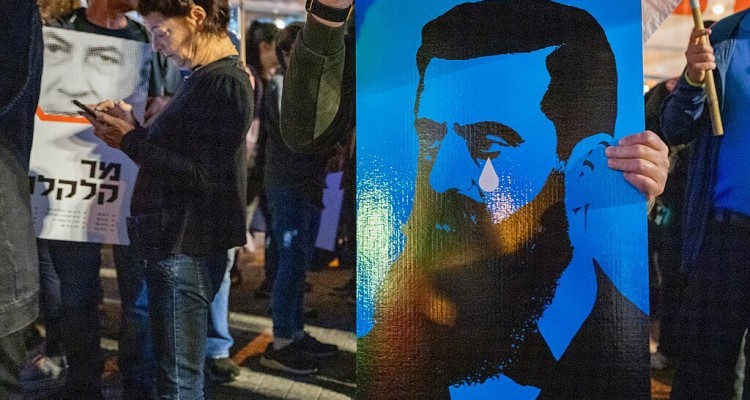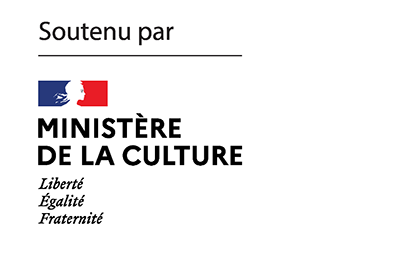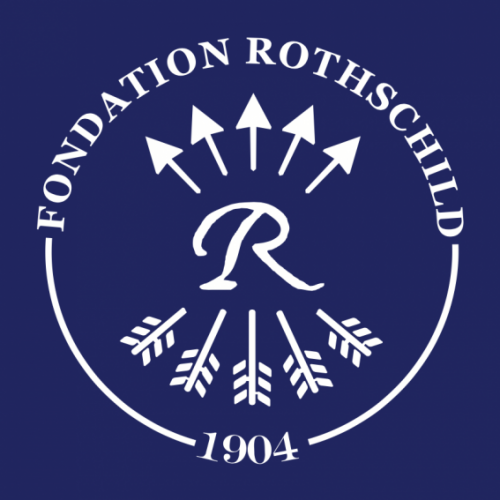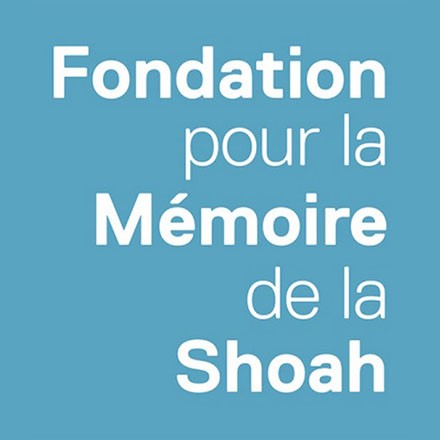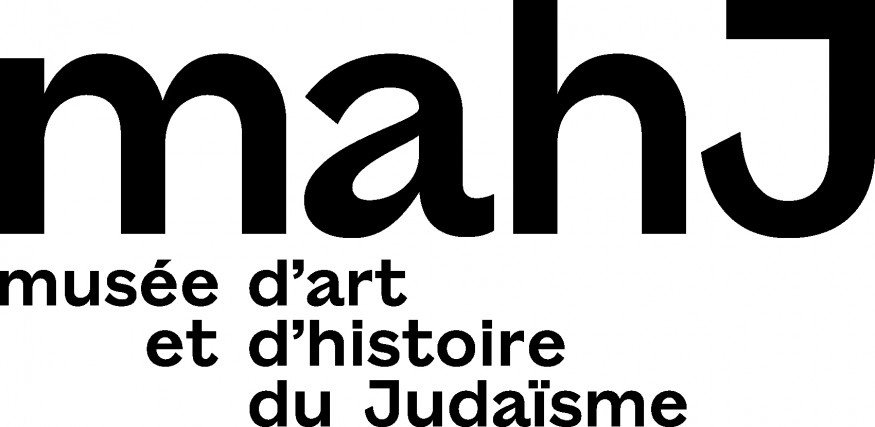Exactly eighty years ago, on September 29-30, 1941, nearly 34,000 Jews from Kiev were executed at Babi Yar[1], a ravine located west of the Ukrainian capital. “Babi Yar” is the name that symbolizes par excellence the extermination of the Jews of this region in the Soviet and post-Soviet collective memory. This is a chaotic memory, however, in which the regular reminder of the event (the massacre immediately and continuously gave rise to a literature and cultural production that evokes it) and its repression (the result of a policy of concealing the genocidal dimension of the massacre by the Soviet authorities) have traced two paths that have, strangely enough, run together. The question of the memorialization of the site, raised at the end of the war, has still not found a clear answer to this day. Lisa Vapné gives us a glimpse of the long and conflicting history, full of twists and turns, of a memory that has yet to be built on the very site of the crime.
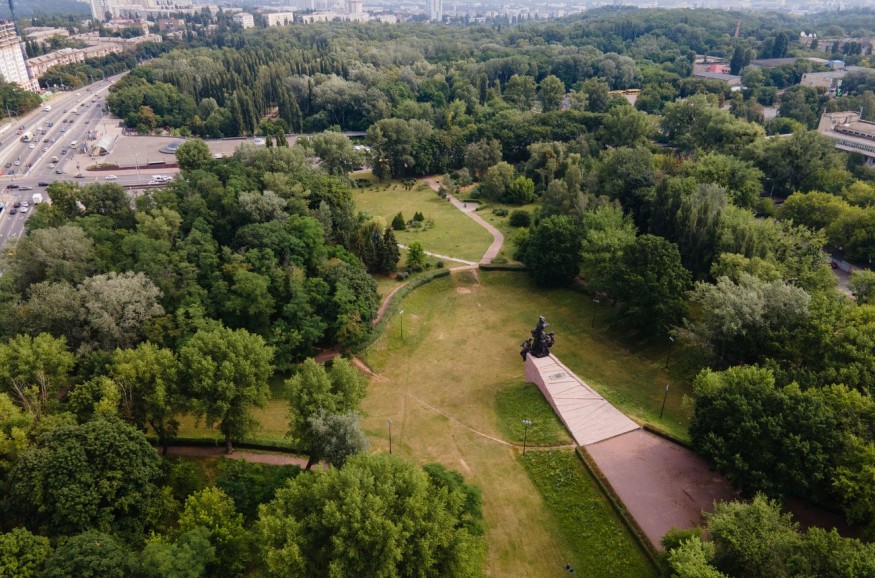
“There are no monuments at Babi Yar”: this is how a Soviet poet, Yevgeny Yevtushenko, began one of his poems in 1961, after visiting the ravine where twenty years earlier the Jewish families who remained in Kiev had been shot by Nazi bullets. At the time, this poem, which explicitly stated that the victims of the ravine were Jews and that the Soviet Union had therefore not allowed a monument to be built there, caused a sensation in the USSR and beyond its borders. Already before him, another Russian writer, Viktor Nekrasov, residing in Kiev, had asked: why these unburied dead of Babi Yar would not have the right – also – to a monument[2]?
Today, it is no longer the absence of monuments commemorating these dead that gives rise to questions, but rather the conflict around the latest projects that have been proposed, and in particular the latest, the ambitious project unveiled in 2016 of the Babi Yar Holocaust Memorial Center (BYHMC), intended to give both a museum and a memorial complex to this tragic site of the Holocaust in Ukraine. This project galvanizes passions, divides the Jewish world and others, and arouses such hostility among some that, after a long series of aborted memorials, we are still wondering whether this memorial will ever open and, above all, what form it will take.
Sixty Years of Soviet Silence
Babi Yar is the name of the ravine where on September 29 and 30, 1941, at least 34,000 Jews who remained in Kiev were shot, after having been forced to gather at the intersection of Melnikov and Dokterivska Streets with their identity papers, money and warm clothes on pain of death. That day, the Jewish population of Kiev, who had not left or been evacuated, crossed the city in full view of the inhabitants to Babi Yar, where they were summarily executed over several days. The heads of the German occupation troops, only six days after their arrival in Kiev, had prepared the liquidation of the city’s Jews, having received a sufficient number of bullets to kill the entire Jewish population of the Kiev region. Babi Yar, next to which the Syrets concentration camp was established, must be considered one of the annihilation centers of the Holocaust. It was Jews who were overwhelmingly executed there between 1941 and 1943, although other groups were also shot there: Roma[3], Soviet prisoners of war, fighters of the Ukrainian Nationalist Movement (OUN), Orthodox priests, Ostarbeiter, patients of a nearby mental hospital. Sometimes killed elsewhere, their remains were thrown into the ravine. Then, after the end of the massacres, in the summer of 1943, the traces of the genocide were partially erased by the Nazis in the framework of Operation 1005, which involved the exhumation and cremation of the bodies.
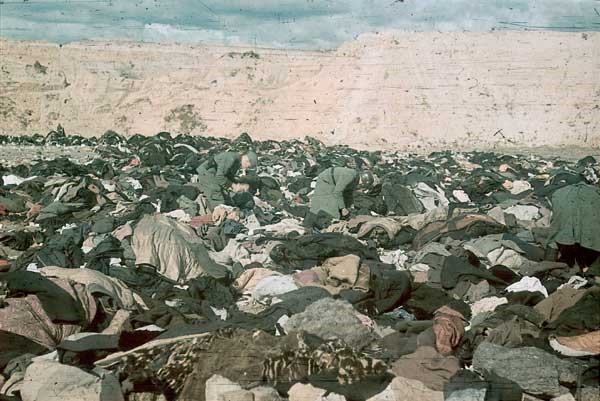
How did Babi Yar, this ravine of death which was at the same time the scene of war crimes, become the paradoxical double symbol of the genocide of the Jews in the USSR and of the state’s occultation of the Shoah on Soviet territory?
As early as March 1945, the local Soviet authorities decided to have a monument erected by the chief architect of Kiev – a monument that would honor the victims as Soviets, but a monument nonetheless… No official ceremony had yet been held at Babi Yar, despite the efforts of Yiddish poet David Hofshteyn, who had just returned to the Ukrainian capital and tried to organize a memorial gathering in September 1944. The Soviet authorities told him that it was better to abandon such an initiative, arguing that they feared anti-Semitic reactions among the local population. Very quickly, it was no longer the active anti-Semitism of a part of the population – a pogrom against the Jews of Kiev broke out in September 1945 – that represented an obstacle to memorial initiatives, but that of the Soviet State and its representation in Ukraine, which put an end to the project of making Babi Yar a place of commemoration in 1946. The period is not one of monuments to remember the Jews murdered during the war; it is one of secret assassinations of Jewish writers – including that of David Hofshteyn, on August 12, 1952[4].
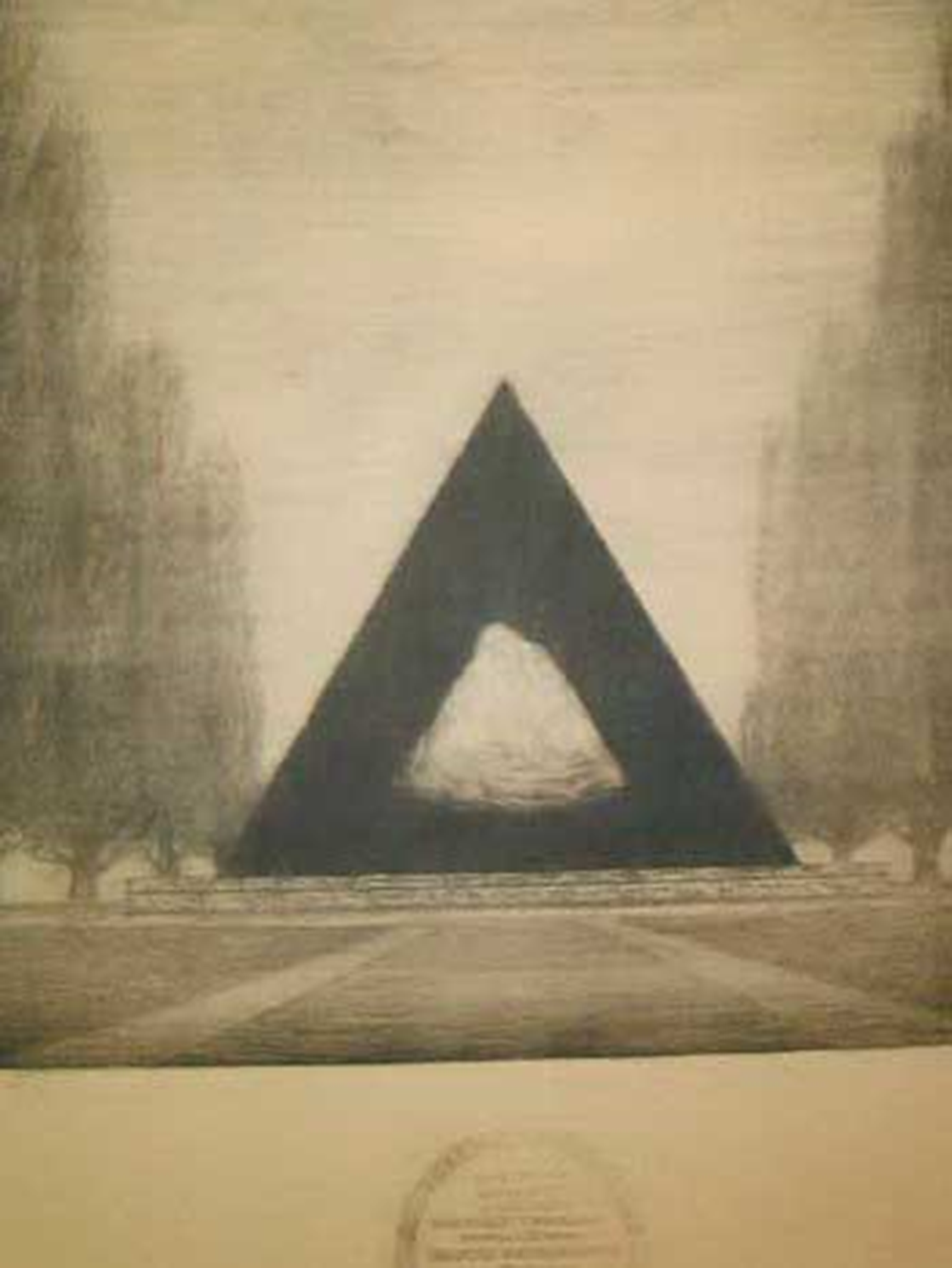
The Soviet authorities want Babi Yar to be erased from the city and from the memory of the living. Urban planners are tasked with transforming this territory by making the ravine disappear to obliterate it from the geography of Kiev. The adjacent former Jewish cemetery, closed in 1937, and also a place of executions, suffers the same fate, left abandoned before being razed. A brick factory dumped its mud into the tragic ravine – until one day in March 1961, when, following a heavy rain, a dam broke and mud ravaged the area. The writer Friedrich Gorenstein, who knows the memory of the place, describes this event as “mystical and heavenly”[5]…
In spite of everything, the name of Babi Yar has remained. The imposed silence made one talkative. And from the thaw of the Cold War onward, the place carried memories thanks to poets, novelists, composers.
Monuments to Oblivion
In the Soviet Union of 1965, where Yevtushenko’s voice resounded – “There are no monuments on Babi Yar” – a call for a competition was launched in Kiev to build a monument that, like twenty years earlier, would represent the heroism of the Soviet citizen in the face of death. Regardless of the number and quality of architectural proposals exposed to the public at the end of the year, none of them finally received the approval of the jury[6]. And Yevtushenko’s appeal remains unanswered: there are still no monuments on Babi Yar…
A year later, in September 1966, reckless young Jews call for “spontaneous” memorial gatherings not far from where the massacres were committed. Non-Jewish dissidents were present: the writer Viktor Nekrasov, the mathematician Leonid Plioutsch and the Ukrainian poet Ivan Dziouba.

Since the production of oblivion by imposing silence was not very effective, the Soviet Ukrainian authorities finally decided to erect a simple tombstone where it is written, in Ukrainian: “Here will be erected a memorial to the Soviet victims of the crimes of fascism during the occupation of the city of Kiev between 1941 and 1943.” The inscription on this stone – in which the Jews are deliberately omitted – is very quickly crossed out with a line by a vengeful hand. Paradoxically, this stone gives those who want to commemorate Babi Yar a place around which to gather[7] – while nothing remains in the morphology of the ravine to remind one of the site of the executions.

In 1969, in opposition to these rallies, the first secretary of the committee of the city of Kiev, decides to organize a counter-meeting in memory of Soviet soldiers and citizens killed by German “fascists”[8]. Babi Yar became for a few years, in September, in parallel with the Soviet rallies, a gathering place for Kievan refuzniks, Soviet citizens of Jewish nationality awaiting a visa to Israel. Over the years, many Ukrainian Jews left the USSR, as did dissidents such as Nekrasov and Plioutsch . Babi Yar, as a territory of an alternative memory to the official narrative, would also be exported and become the object of a transnational memory and, later, a possible place of memorial tourism for Jews of Ukrainian origin…
Finally, a monument in the socialist realist style of Soviet memorials was erected at Babi Yar in 1976, designed to mark the territory. The writer Victor Nekrasov wrote sarcastically at the time, “It took thirty-five years for the half-naked, brawny bronze bodies of fighters and resistance fighters to appear (…) on the spot where old men had been shot, looking forward to the future with calmness and confidence.”[9]”The place chosen to erect the sculpture and the artificial ravine built around it are not those of the executions. The monument to Babi Yar from 1976 is gigantic like the oblivion and error it induces.
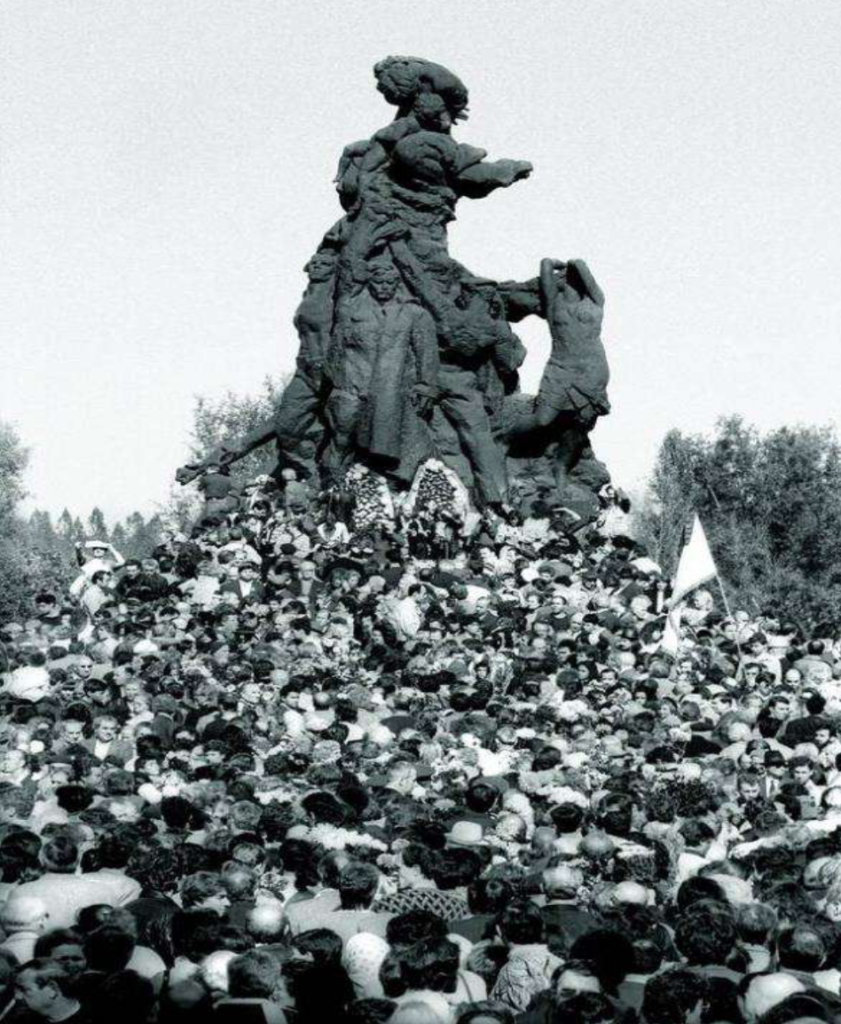
Cacophony of Memory
It was only much later, in 1991, fifty years after the tragedy, at the time of the September commemoration, that Leonid Kravchuk, then head of the parliament of the very young independent Ukraine, broke with Soviet rhetoric. He finally officially recognized that the Jews constituted the majority of the victims of Babi Yar as part of a specifically genocidal project. He also acknowledged the responsibility of those who “did not stop the murderers,” asked “the Jewish people for forgiveness” and declared that “it is necessary for a people to admit its mistakes and ask for forgiveness” in order to move forward. During this week of commemoration, a bronze Menorah is unveiled[10] inscribing in the memorial landscape of Babi Yar that it was as Jews that old men, women, men, children were murdered. The story could have ended there, but it has continued for thirty years, because today it is a memorial center and a museum that must be built to give a narrative to a place that lacks legibility. But what kind of narrative should be proposed for a place with several facets?
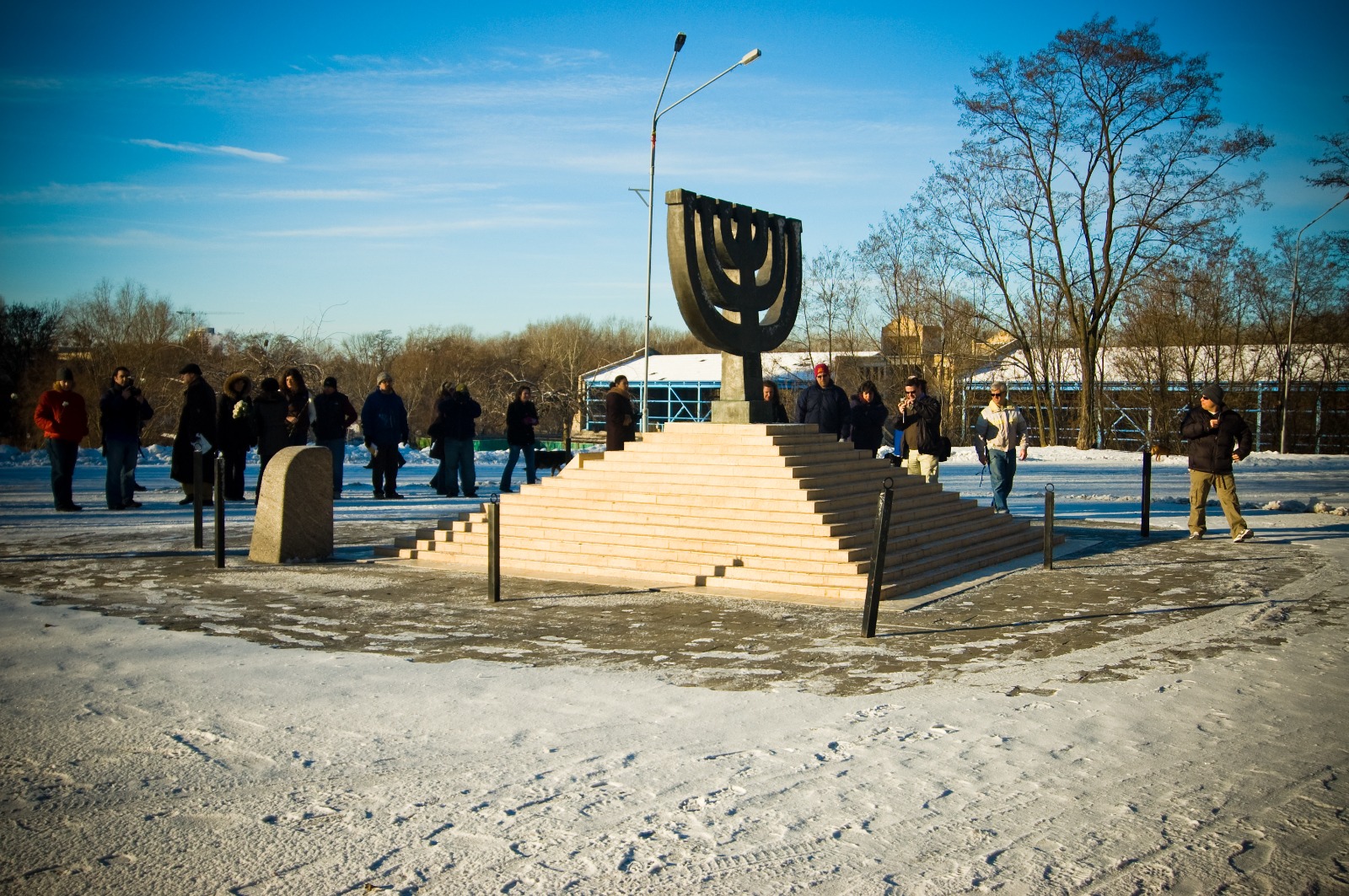
Over the years, since 1991, different groups have come to place their stone, their symbol, their stele around Babi Yar. All of the victims’ groups have erected their own memorial, creating a mosaic of monuments that, writes Barbara Martin, “gives free rein to a plurality of memories, claimed by distinct groups [that] engage in a competition whose stake is the appropriation of a space that is as much symbolic as it is physical.”[11]
Even today, in 2021, about thirty distinct monuments litter the territory of Babi Yar. Thirty symbols that certainly allow to get out of the ethnic indifferentiation and typology of crimes, which characterized this place in the Soviet era, but that scatter the memories of the place and do not make it at all intelligible for a visitor. Some of these stones are promises of Holocaust memorial centers that never came into being.
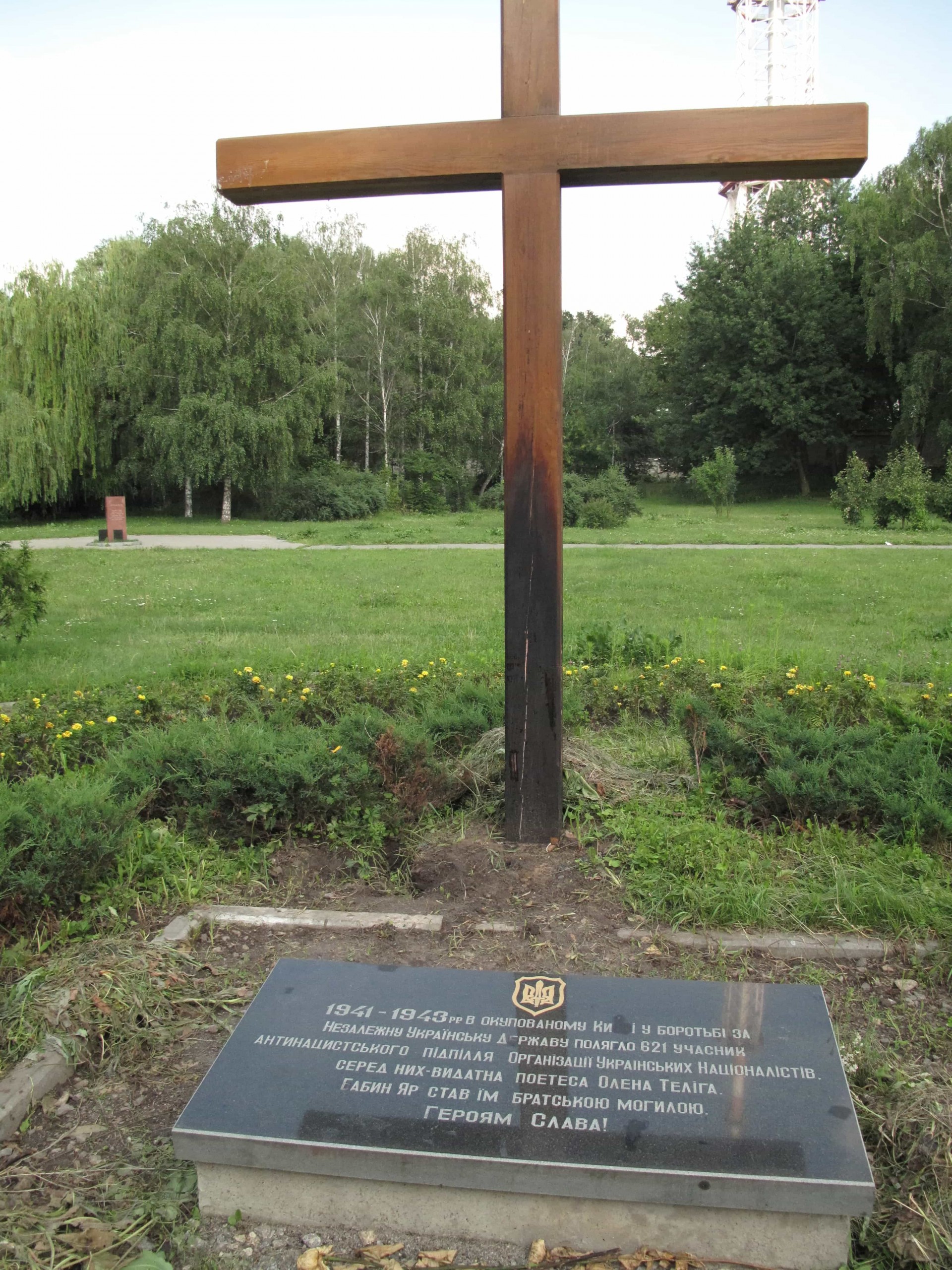
Projects from Abroad
In 2000, the American Jewish Joint Committee, which has largely financed the revival of institutionalized Jewish communities throughout the post-Soviet space (whose demographics have been totally altered by mass emigration to Israel and Germany), proposed to finance a memorial at Babi Yar as well as a cultural center dedicated to the history of Ukrainian Jews and the Shoah. A call for architectural projects was launched. It was finally won by an Israeli team with the support of the local authorities. Once again, a first stone was symbolically laid.
The project will not see the light of day: between 2002 and 2003, a polemic will make its instigators give up. The former dissident Iossif Zissels, president of an association representing Ukrainian Jews[12] and Ivan Dziouba, the Ukrainian poet who had spoken out as early as 1966 against the Soviet discourse of obliteration of the Jewish memory of Babi Yar, join in their opposition to the American project. The latter, who are true moral authorities bring together – under the name of the Babi Yar Committee – other former human rights activists, the writer Andrei Kurkov, but also, more surprisingly, Mikola Plaviuk, the head of the Organization of Ukrainian Nationalists[13]. This heterogeneous committee begins to fight the American Jewish project in the name of, among other things, Jewish law, the Halakha, arguing that it prohibits building on the site of ancient cemeteries or over the dead. The committee opposes and will oppose all attempts to build on this site[14]. In addition, Zissels, a vehement spokesman for this opposition, sees the project from the United States and all those that will come from outside as “paternalistic”, imperialist initiatives. It is up to Ukraine, he says, to build its own memorial and museum and not to the Jews beyond its borders[15]. But Ukraine does not have the financial means to do so, and under President Viktor Yushchenko, Ukrainian authorities have not put the memorialization of Babi Yar on their memorial political agenda. Instead, they are preparing for the commemoration of the seventy-fifth anniversary of the Ukrainian famine, for which an imposing memorial museum will open in Kiev in 2008.
At the same time, in 2007, a committee of international historians and architects met to call for the creation of a Holocaust memorial at Babi Yar and launched – once again – a call for projects under the auspices of the Ukrainian Academy of Architecture. It will not see the light of day either. President Yushchenko then accepted the initiative of the “Babi Yar Committee”, to transfer the management of the territory of the Babi Yar site, empty of buildings, which had become a preserved area under the name of “Babi Yar National Historical-Memorial Reserve” from the Kiev City Hall (much to their regret at losing a potentially juicy piece of land) to the Ukrainian Institute of National Memory (which remained apathetic)[16].
History will repeat itself again. In 2011, on the occasion of the September days, the newspaper Le Monde reported, “A foundation stone was laid for the construction of a 5,000-square-meter memorial, which will be financed by two Ukrainian-Israeli businessmen. Two years ago, the Kiev City Council had planned to build a hotel there for the Euro-2012 soccer tournament.” It gave up under pressure from critics. This foundation stone laid in 2011 is, once again, the only one that will be laid for this project; the two businessmen, wealthy magnates, Vadim Rabinovitch and Ihor Kolomoïsky will not attend the birth of their museum, since their project is criticized, among other things, for being constructed on the site of a former cemetery. In 2015, the two men handed over their lease to the Babi Yar Holocaust Memorial Center (BYHMC).
A New Chapter Begins: The Adventures of the Babi Yar Holocaust Memorial Center…
In September 2016, at the time of the commemorations of the 75th anniversary of the massacre, a “declaration of intent” was announced for the opening in 2021 of a major Holocaust Memorial Center at Babi Yar. This initiative is all the more supported by President Petro Poroshenko because it does not require Ukraine to put its hand in its pocket. It is the result of an alliance between Jewish authorities in the Diaspora, in this case the president of the World Jewish Congress Ronald Lauder (businessman and philanthropist), the former president of the Jewish Agency in Israel Natan Sharansky (known to be also a former Soviet dissident and conservative Israeli politician), the mayor of Kiev Vitali Klitschko (best known as a former boxer) and a number of businessmen holding several passports – to which we will return – whose participation appears to be the promise of significant funding.
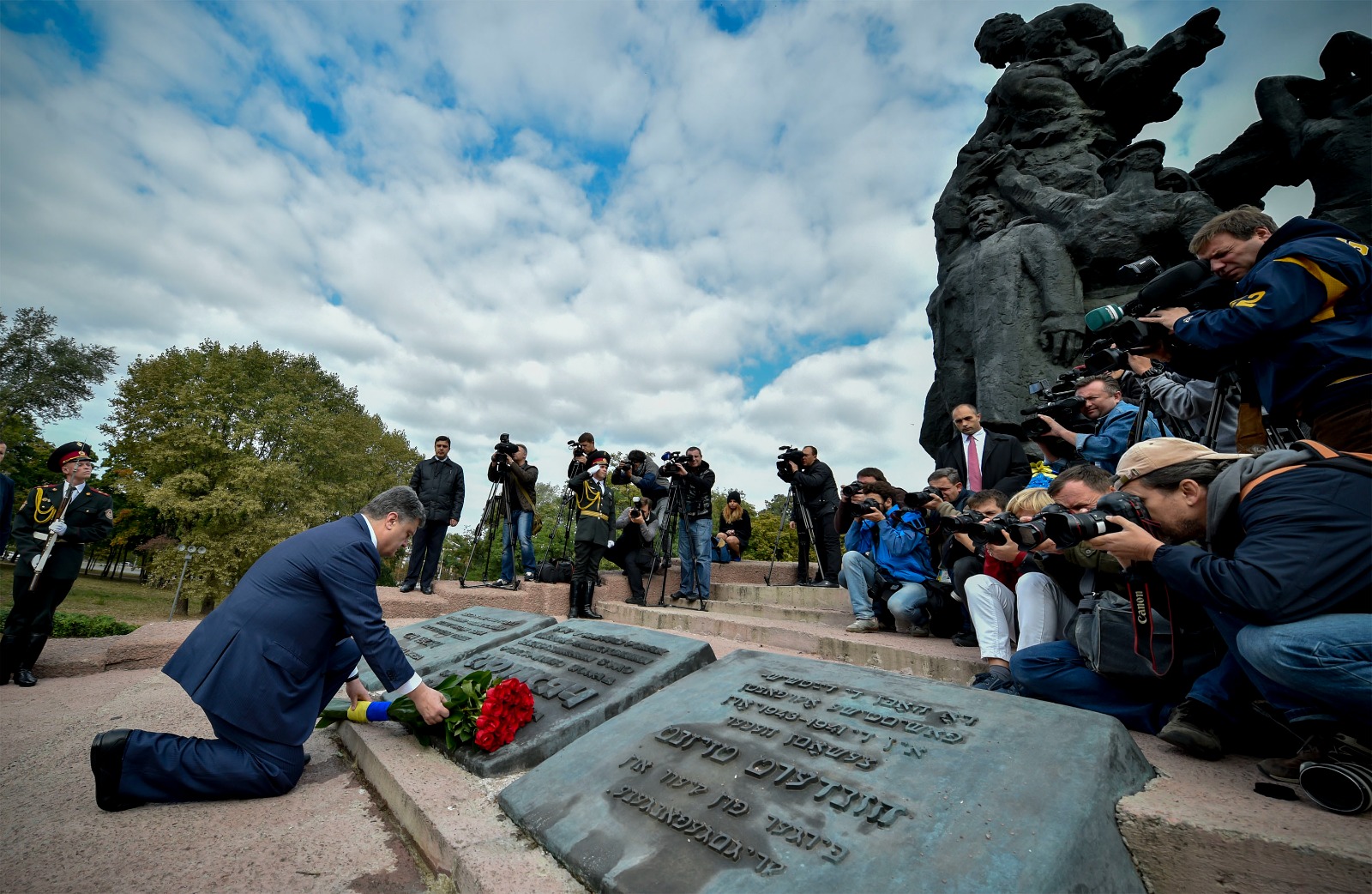
Since its creation, Boris Glazunov, head of the “Babi Yar National Historical-Memorial Reserve”, has been struggling to find money for public restoration and development projects. The intention once proclaimed has not been followed by any political will, let alone financial support. Glazunov begs, without much success, for money from oligarchs [17] and only a few of his ambitions are realized over the years so that the site under his care is still this leisure spot where Kievians walk their dogs and cook their shashlyks and gradually becomes a territory dedicated to the memory of all those who were killed there – as well as the “Righteous”[18].
Meanwhile, the BYHMC is getting a scientific committee of the finest historians on the Holocaust in the Soviet Union, including Karel Berkhoff, who will head it from 2016 to 2020, in charge of writing a historical narrative for the future museum. The call for an international architectural competition launched in 2018, is won in September 2019 by an Austrian architectural firm to build, according to the official presentation, the “first memorial center in Eastern Europe dedicated to the memory of the Holocaust on the very places where the tragic events took place.” In reality, another ravine in the vicinity of Kharkiv has, since 2002, its modest memorial complex having succeeded in solving the two main problems: finding funding and having the right to build on the land[19]. On the face of it, everything looks relatively good for the ambitious Kiev project born under the best auspices since they have both.
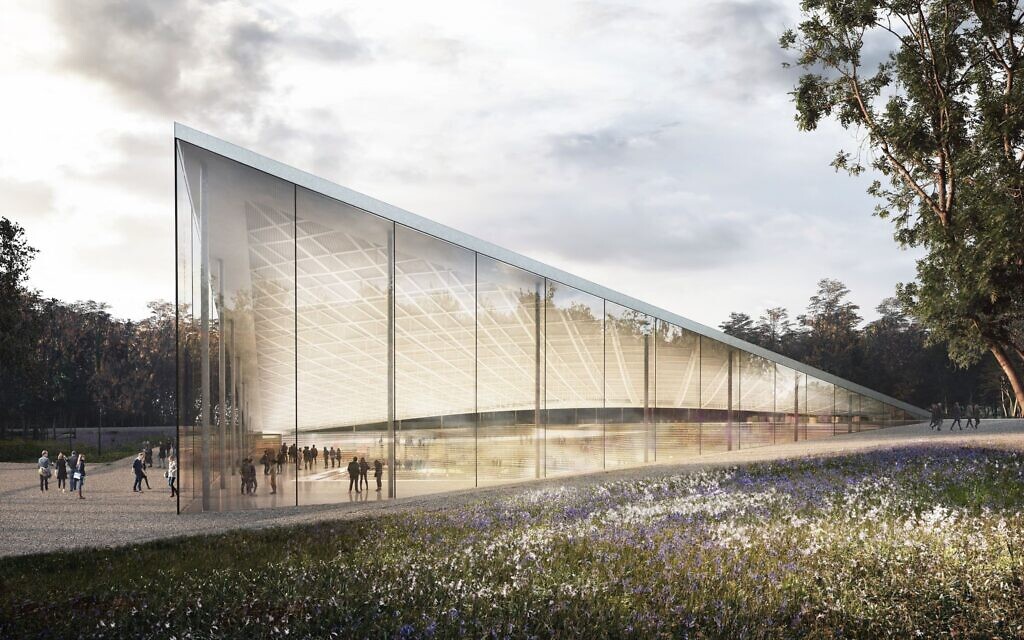
When the Controversy Becomes Aesthetic…
But the BYHMC, which by its ambition is in the court of the great international memorials with Yad Vashem, the Washington memorial or the Denkmal in Berlin, wants to be at the forefront of museographic innovation and hires in November 2019 an artistic director, the Russian director Ilya Kryzhanovski, known in particular for the installation known as “DAU”, both historical film and immersive experience that the Chatelet theater had hosted in Paris[20]. The general idea that accompanies this appointment is not, on paper, without relevance: it is to wake up from its torpor and indifference the visitor who would know nothing about the history of Babi Yar. How can this be done? By giving the visitor an experience described as immersive, by shaking him[21]. The project of transposing DAU to Babi Yar, with all the advanced technology, makes us fear the worst. This aesthetic reversal causes the resignation of, among others, Karel Berkhoff. Dieter Bogner, an art historian and jury member for the competition, described the new direction of the project as the “Disneyland of the Shoah”, an expression that has since become popular to discredit a project that suggests the worst, but also proposes, like other initiatives, the best: a better understanding of the massacre and of those who were killed.
While this new controversy rages, the Institute of History of Ukraine attached to the National Academy of Sciences announces the creation in 2019 of a museum of the Holocaust in Ukraine, a museum of Babi Yar, but also a park, to be financed by public money. The presentation text, finally published in 2021, says that the “National Historical and Memorial Reserve of Babi Yar” will be responsible for the implementation of the project, provided that it is given more prerogatives. This text also insists on the importance that the Ukrainian state must have in this project and its financing. However, the state, in the person of Volodymyr Zelensky, its president elected in 2019, supports, like his predecessor, the other project of a museum and memorial complex – apparently because he sees the opportunity to avoid financial commitment. On the substance, the promoters of the Ukrainian project tout a Babi Yar museum and park that will be “inclusive” – criticizing the appropriation of the site by victims’ groups. “Inclusive” here points to the concern that all victims, without distinction, be honored: all victims of Nazi racial policy, but also Ukrainian nationalist collaborators who supported Nazi genocidal policy.

The Hybrid War and Russian Financing
Two projects are now in competition. And in the summer of 2021, supporters of the Ukrainian initiative appeared regularly in the media to attack the so-called “Russian” project. The members of the Jewish Communities of Ukraine support one or the other project…
It is sometimes difficult to understand what the dividing lines are between the different camps. The opponents of the BYHMC have, in addition to the religious argument prohibiting any construction on an ancient cemetery (an argument that does not obviously bother the long list of Ukrainian rabbis supporting the project), also this reasoning: this memorial complex is financed by Russian oligarchs close to Russian President Vladimir Putin who uses the BYHMC to discredit Ukraine by highlighting Ukrainian anti-Semitism; the construction of the BYHMC is part of the hybrid war led by Russia. It would be for the Russian president, in a context marked by the annexation of Crimea by the Russian Federation and its support for the armed conflict in the Donbass, to continue the war by other means by trying, says Zissels, “to influence our culture and our politics of memory.” For the latter, since Babi Yar is on Ukrainian soil, it is imperative to fight against any neo-colonial attempt on the part of Russia and against the financial involvement of “Russian oligarchs” in a place as symbolic as Babi Yar.
Indeed, the contested project is financially supported, at least in part, by several oligarchs whose names are regularly cited in the press. The names most often mentioned when discrediting the BYHMC are those of Mikhail Fridman and Guerman Khan – of Russian and Israeli citizenship – whereas the supporters of the BYHMC prefer to mention the Ukrainian Jewish businessman and philanthropist Viktor Pinchuk. The first two, as well as other oligarchs, took advantage of the economic transformations in the USSR and its successor societies to earn a lot of money in a short period of time, which they sometimes reinvested in philanthropic or artistic projects. This philanthropy is the other side of the frequent collusion with the political apparatus – in Ukraine and Russia in particular. The memory of the Shoah is one of those philanthropic causes that can allow them to clear their name, to restore their image tarnished by shady deals on the international scene. At the same time, this does not obliterate the possible sincerity of these men of power and money in their desire to participate in the memorialization of Babi Yar, insofar as these “Russian oligarchs” are also Jews born in Ukraine and marked on a personal and family level by both the Shoah in this territory and by anti-Semitism. It does not seem that their financial involvement has had any repercussions on the work of historians. Indeed, Karel Berkhoff, after leaving the BYHMC, said that the oligarchs had never sought to influence his work. Thus, there is no evidence that the BYHMC project is being driven in any way by Putin. On the contrary, one might even think that the construction of such a memorial strengthens Ukraine on the international scene, giving it an image far removed from the commonplaces favored by the Kremlin about the anti-Semitism of Ukrainians.
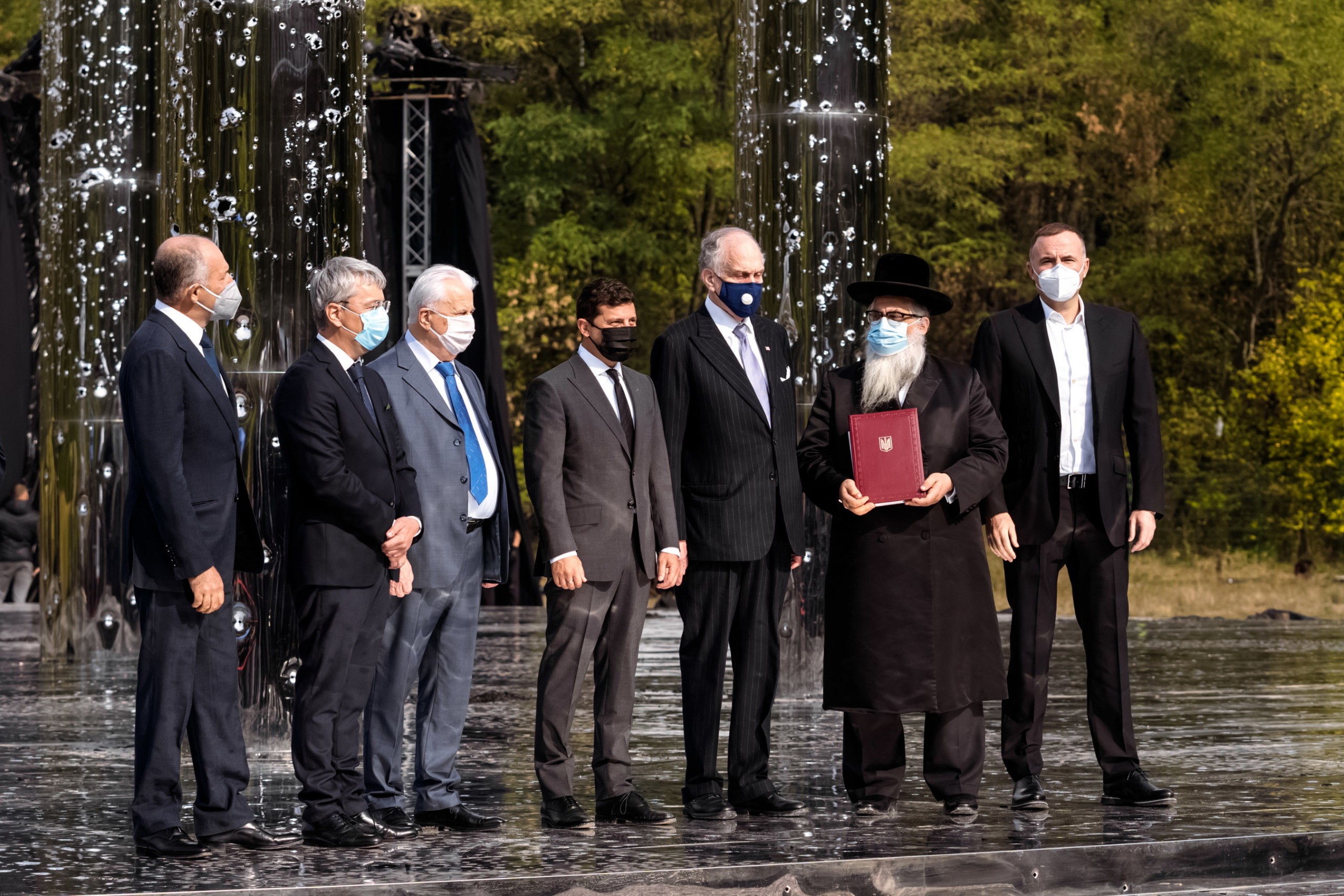
In any case, this controversy, which is heating up the Ukrainian media as the eightieth anniversary of the massacre is being prepared, marks the persistence of a memorialization that is still in search of its form…
Since 1944, Jews have expressed the wish to gather near the place in Babi Yar where tens of thousands of Jewish inhabitants of Kiev were executed. They commemorated their dead in silence and secrecy. The Soviet state, until its collapse in 1991, opposed the recognition of the Babi Yar site as a center for the killing of Jews. From 1991 onwards, Ukrainian heads of state went to the big official commemorations in September ,but showed little political will to memorialize the site with public money. The attempt to create a memorial and museum center at Babi Yar has been an endless series of failures and a damning story – the outcome of which is hard to see. Today, there is even talk of two Holocaust museums in Ukraine, which would be located side by side in the area around the fateful ravine. The idea of this competition of two museums reveals once again the irony of the situation and the persistent conflicts of memory around such a place and such an event. The memorialization of Babi Yar, a matter still to be followed, therefore…
Lisa Vapné
Lisa Vapné holds a doctorate in political science from Sciences Po Paris and her thesis is entitled The Substitutes. Jewish migration from the former Soviet Union to Germany. 1990-2010. She recently published the chapter on the year 1990 in. Histoire des Juifs: Un voyage en 80 dates de l’Antiquité à nos jours, 2020, PUF, Paris, under the direction of Pierre Savy. She is the editorial and scientific coordinator of the RevueAlarmer.
Notes
| 1 | The place is called Babin Yar in Ukrainian, but I have opted for the Russian spelling that is better known to Western readers. It is translated as “the ravine of the woman” or “the ravine of the old woman.” |
| 2 | Viktor Nekrasov, “Pochemou eto ne sdelano?” (Why it was not done), Literatournaja gazeta (Literary Journal), October 10, 1959. |
| 3 | To learn more about the question of the massacres of the Roma population and their memorialization at Babi Yar, see the article by Andrei Kotljarchuk, (2021). Babi Yar and the Nazi Genocide of Roma: Memory Narratives and Memory Practices in Ukraine. Nationalities Papers, 1-21. |
| 4 | On Soviet anti-Semitism, and more specifically, the post-war occultation of the genocide of the Jews see: KOSTYRCHENKO, Gennady, Out of the Red Shadows: Anti-semitism in Stalin’s Russia, From the Secret Archives of the Former Soviet Union, Amherst, 1995 and, online, Assia Kovriguina and Lisa Vapné, « Les formes d’hostilités antijuives de l’État soviétique à l’époque stalinienne : quelques jalons », Revue Alarmer, put online on December 12, 2020. |
| 5 | Cited by Assia Kovriguina in her thesis, Le témoignage impossible? Écritures de la destruction des Juifs en URSS, Université de Paris, 2019, p. 258. |
| 6 | Tatiana Estafieva ” K istorii ustanovleniia pamiatnika v Babem Iaru ” [“For the history of the erection of a monument in Babi Yar”], Evreiskii obozrevatel, June 2002. |
| 7 | Emmanouil (Amik) Diamond, Babi Yar: The Almost Unknown Mystery. Khadashot, 2016. (In Russian) |
| 8 | Op. cit. |
| 9 | Viktor Nekrasov, Vzgliad i nechto [“A look plus something else”]). All translations are by the author. |
| 10 | Journalist Mikhail Frenkel writes that it too was initially only a model in anticipation of another monument being unveiled. But the mockup was perpetuated, |
| 11 | Barbara Martin “Babi Yar. The impossible commemoration,” Emulations No. 12, 2018, pp. 67-79. |
| 12 | Vaad or Association of Jewish Organizations and Communities of Ukraine. |
| 13 | Dead in 2012, he still appears on the website of the Babi Yar Committee posthumously. |
| 14 | http://www.kby.kiev.ua/komitet/ru/aboutus/art00040.html |
| 15 | Idem |
| 16 | The reserve would be transferred back to the authority of the Ministry of Culture and Tourism a few years later. |
| 17 | Except for the oligarch Alexander Loifenfeld, Boris Glazunov points out. |
| 18 | It is striking that the Righteous, that is, non-Jewish people whose help was officially recognized by Yad Vashem thanks to the files compiled by those they saved, occupy an important place on both sides in the media space as soon as it comes to commemorating Babi Yar. The memorialization of the Righteous, including an alley and a list of names, has long been part of consensual memorial practices. The Righteous are a mirror in which all societies like to contemplate themselves; and it is also a soft weapon that is drawn when the question of the involvement of collaborators may become too present. |
| 19 | https://www.jta.org/2002/12/19/lifestyle/memorial-to-ukraine-massacre-erected |
| 20 | On the subject, see in particular the article by David Novarina. |
| 21 | See the article that the newspaper Le Monde devoted to this controversy in July 2020. |

